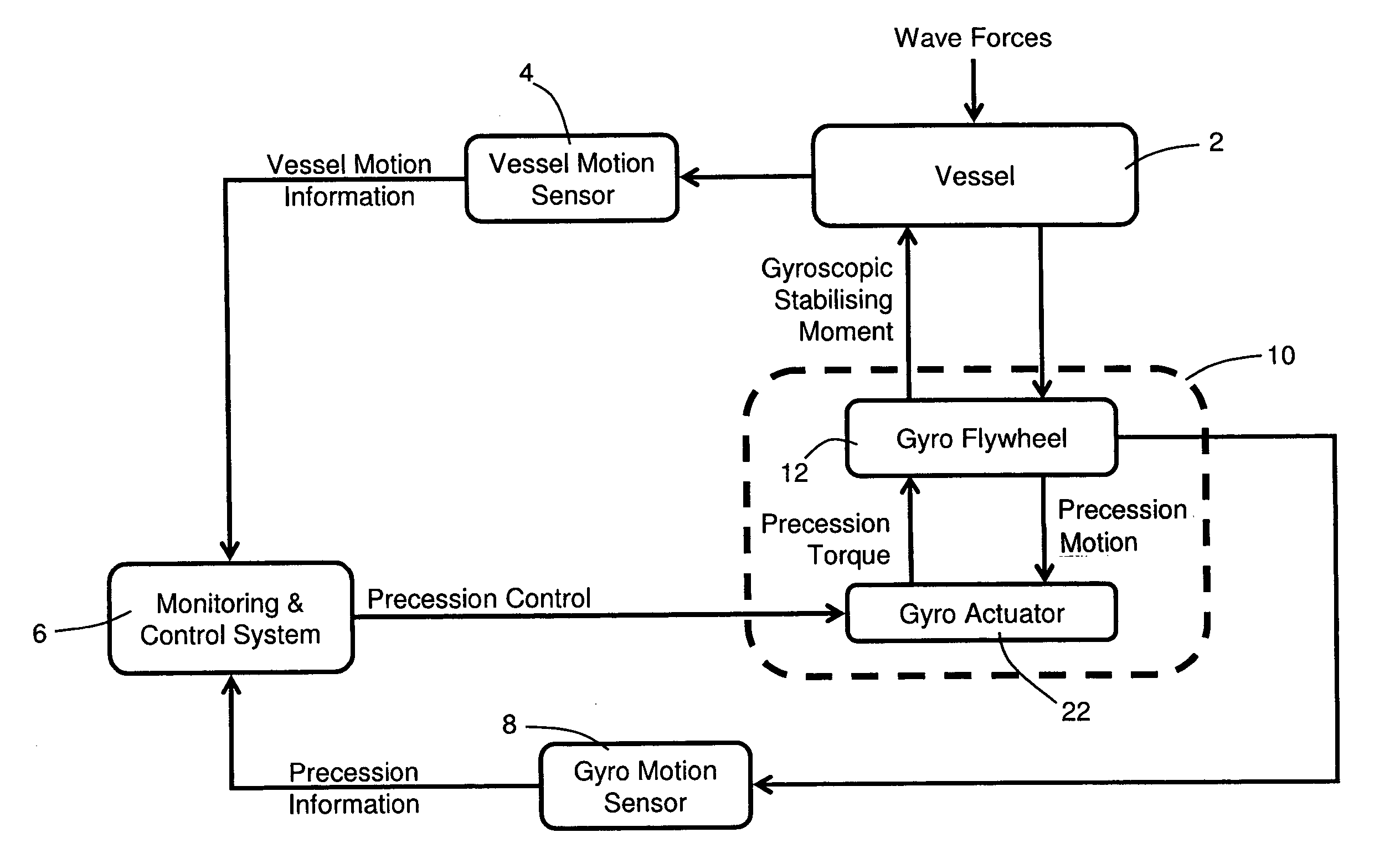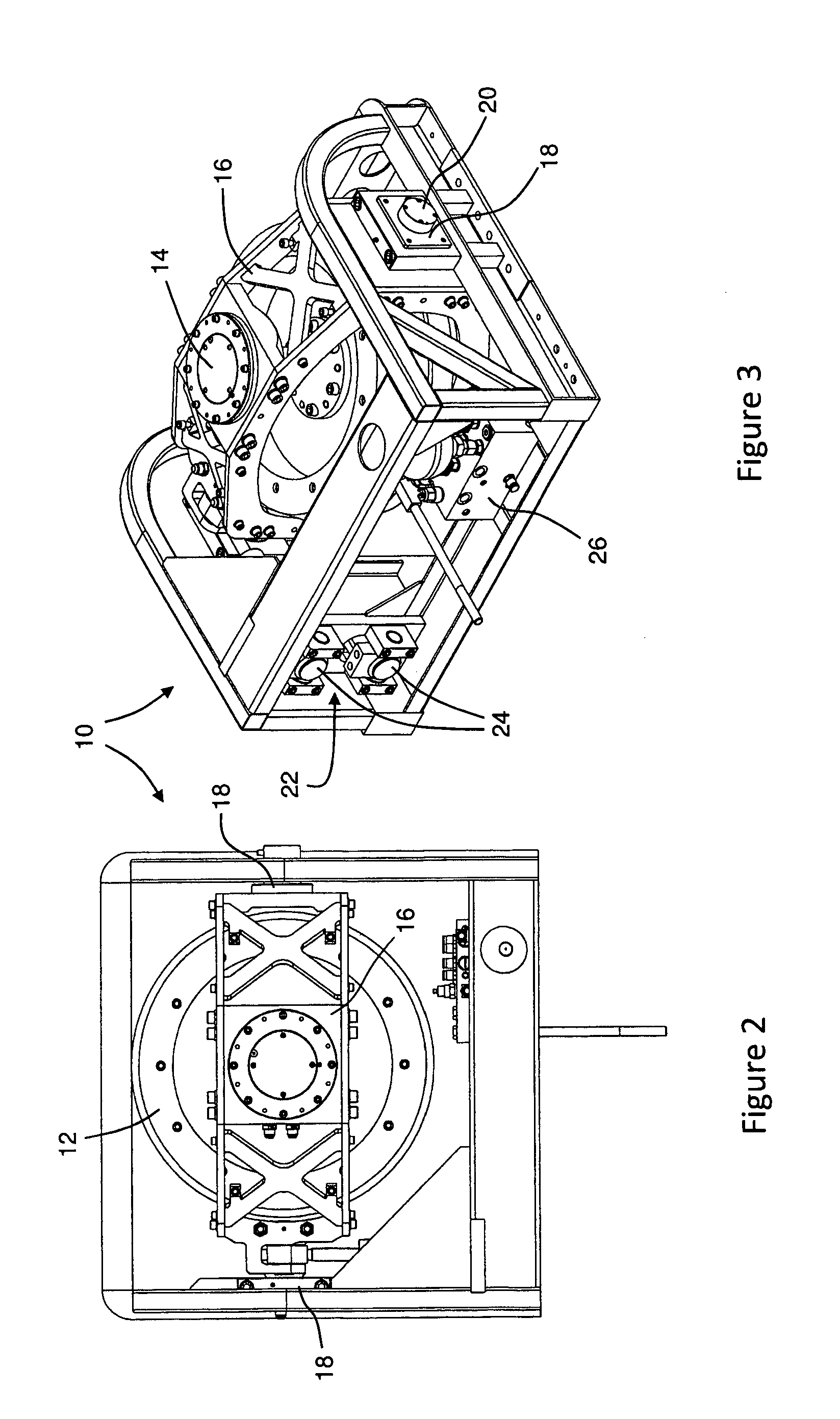Active adaptive gyrostabiliser control system
a control system and gyrostabiliser technology, applied in the field of gyrostabiliser control system, can solve the problems of limited performance, instability of the roll resisting torque produced by the flywheel, and limited stabilising effect during more common events
- Summary
- Abstract
- Description
- Claims
- Application Information
AI Technical Summary
Benefits of technology
Problems solved by technology
Method used
Image
Examples
Embodiment Construction
[0057]Throughout this specification the term “vessel” refers to a marine floating platform, typically a boat, yacht, barge, ship or submarine, which is subject to oscillating motion due to environmentally induced excitation forces that produce roll motion. The term “roll motion” refers to the rolling motion of the vessel including any or all derivatives thereof, but more broadly refers to any oscillating motion of the vessel that it is desired to be attenuated. FIG. 1 illustrates in simplified form the typical architecture of a gyrostabiliser control system utilising both vessel motion and precession axis measurements as process control variables. The motion of the vessel 2 is transferred to the flywheel 12 of a gyrostabiliser 10, and the precession action of the flywheel 12 produces a gyroscopic stabilising moment that counteracts the moment induced by the waves. Gyroscopic flywheels have two degrees of freedom: spin and precession. By conservation of angular momentum due to spin a...
PUM
 Login to View More
Login to View More Abstract
Description
Claims
Application Information
 Login to View More
Login to View More - R&D
- Intellectual Property
- Life Sciences
- Materials
- Tech Scout
- Unparalleled Data Quality
- Higher Quality Content
- 60% Fewer Hallucinations
Browse by: Latest US Patents, China's latest patents, Technical Efficacy Thesaurus, Application Domain, Technology Topic, Popular Technical Reports.
© 2025 PatSnap. All rights reserved.Legal|Privacy policy|Modern Slavery Act Transparency Statement|Sitemap|About US| Contact US: help@patsnap.com



